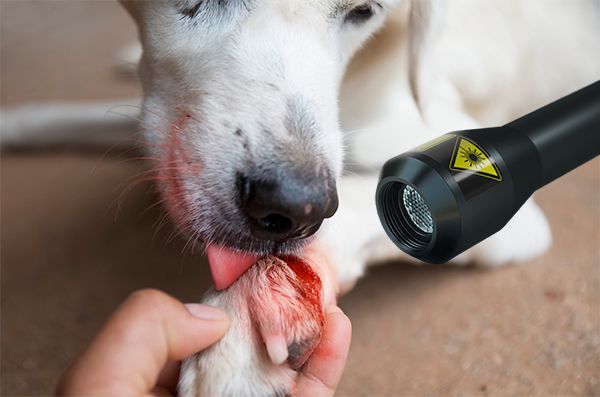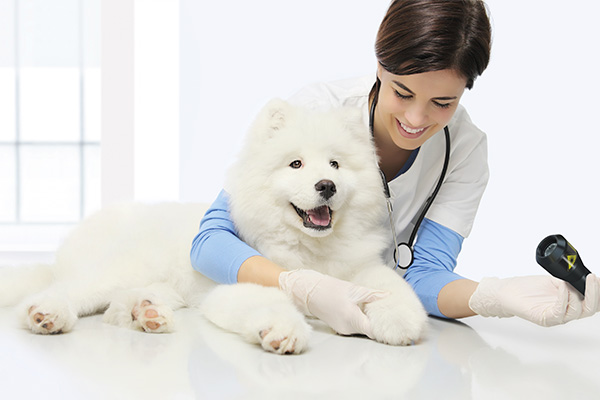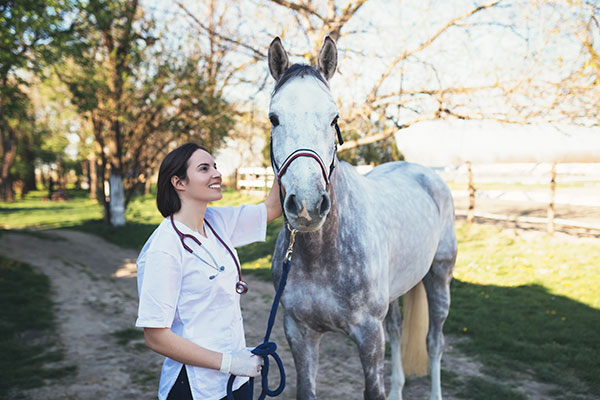

Safe Laser in veterinary medicine
+ Pain relief effect
+ Reduces inflammation and swelling, helps healing.
+ Laser light significantly increases the red blood cell nutrient and oxygen transport capacity – improves cell regeneration.
How does
soft-laser therapy work?
1. Pain relieving effect (based on several biological processes)
+ Soft-laser therapy blocks the pain signals transmitted from injured parts of the body to the brain. This decreases nerve sensitivity and significantly reduces the perception of pain.[1]
+ It also reduces pain by decreasing inflammation and swelling. This mechanism not just reduces the pain but speeds up the healing processes.[2]
+ Laser therapy also reduces pain by increasing the produc5on and release of endorphins and enkephalins which are natural pain-relieving chemicals within our bodies.


2. Inflammation reduction
Soft-laser therapy causes the smaller arteries and lymph vessels of the body to increase in size – a mechanism called vasodilation. This increased vasodilation allows inflammation, swelling and oedema to be cleared away from injury areas more effectively. Vasodilation of lymph vessels also promotes lymphatic drainage which also aids in this vital healing process. Bruising is often resolved more quickly as a result of
this particular biological effect.[2,3]
3. Biostimulation – e.g. faster (wound) healing
+ In our body, ATP (adenosine triphosphate) production is increased by laser light. Increased energy production improves the metabolism of the cells and the regeneration so the healing is faster.[1,4]
+ Soft-laser therapy stimulates the production of fibroblasts which are the building blocks needed to create collagen. Collagen is the essential protein required to replace old tissue or to repair damaged tissue. Because of this effect laser therapy is effective at treating open wounds and burns.[4]


4. Improved blood circulation
+ Soft-laser therapy significantly increases the formation of new capillaries (tiny blood vessels) within damaged tissues. With more capillaries bringing more blood to the injury area, which accelerate the healing and the regeneration processes, thus wounds are closed more rapidly and scar tissue formation is reduced.
+ Laser radiation also has a profound impact on individual blood cells. The laser light significantly increases the oxygen and nutrient load capacity of the red blood cells (RBCs). This allows increased energy production and metabolism of the cells, thereby its regeneration, and the more effective production of certain enzymes. Both of these effects can be felt across the entire body and are not just limited to the area treated by the laser light.[6,7]
5. Improved Nerve Function
Laser light accelerates the process of nerve cell regeneration which decreases the necessary time for nerve cells to heal after an injury.
Also increases the amplitude (strength) of action potentials (signals sent along nerve fibers) which improves overall nerve and muscle function.
Both of these reasons explain why laser therapy is so beneficial at reducing the symptoms related to nerve injury – namely sharp pain, numbness, tingling and burning.
* Bibliography of research publications:
[1] Enwemeka CS, Parker JC, Dowdy DC, Harkness EE, Sanford LE, Woodruff LD.: The efficacy of low-power lasers in tissue repair and pain control: a meta-analysis study. Photomed Laser 5urg 2004; 22: 323-29 (CI=110,IF=1.785)
[2] Bjordal JM, Lopes-Martins RA, Joensen J.: A systematic review with procedural assessments and metaanalysis of low level laser therapy in lateral elbow tendinopathy (tennis elbow). BMC Musculoskelet Disord 2008;9:75
[3] Castano A P,Dai T, Yaroslavsky 1, CohenR, Apruzzese W A, Smotrich M H, Hamblin M R. Low-Ievel laser therapy for zynosan-induced arthritis in rats: Importance of illumination time. LasersSurg Med. 2007; 39 (6): 543-550
[4] Horváth Z, Donkó Z.: Possible ab initio explanation of laser „biostimulation” effect, Las. Appl. In Med. and 5urgery, Bologna, 1992
[4] Hawkins D, Abrahamse H.: Effect of multiple exposures of low-Ievel laser therapy on the cellular responses of human skin fibroblasts. Photomed Laser 5urg 24:705-714 2006 (CI=87, IF=1.732)
[6] Bauersachs RM, Shaw SJ, Zeidler A, Meiselman HJ (1989). Red Blood Cell Aggregation and Blood Viscoeleasticity in Poorly Controlled Type 2 Diabetes Mellitus. Clinical Hemorheology 9: 935-952.
[7] Samoilova K A, Kukui L M. Photohaemotherapy in clinical anf veteniary medicine: therapeutic effects and mechanisms. Laser Therapy. 1996; 8 (1): 63.